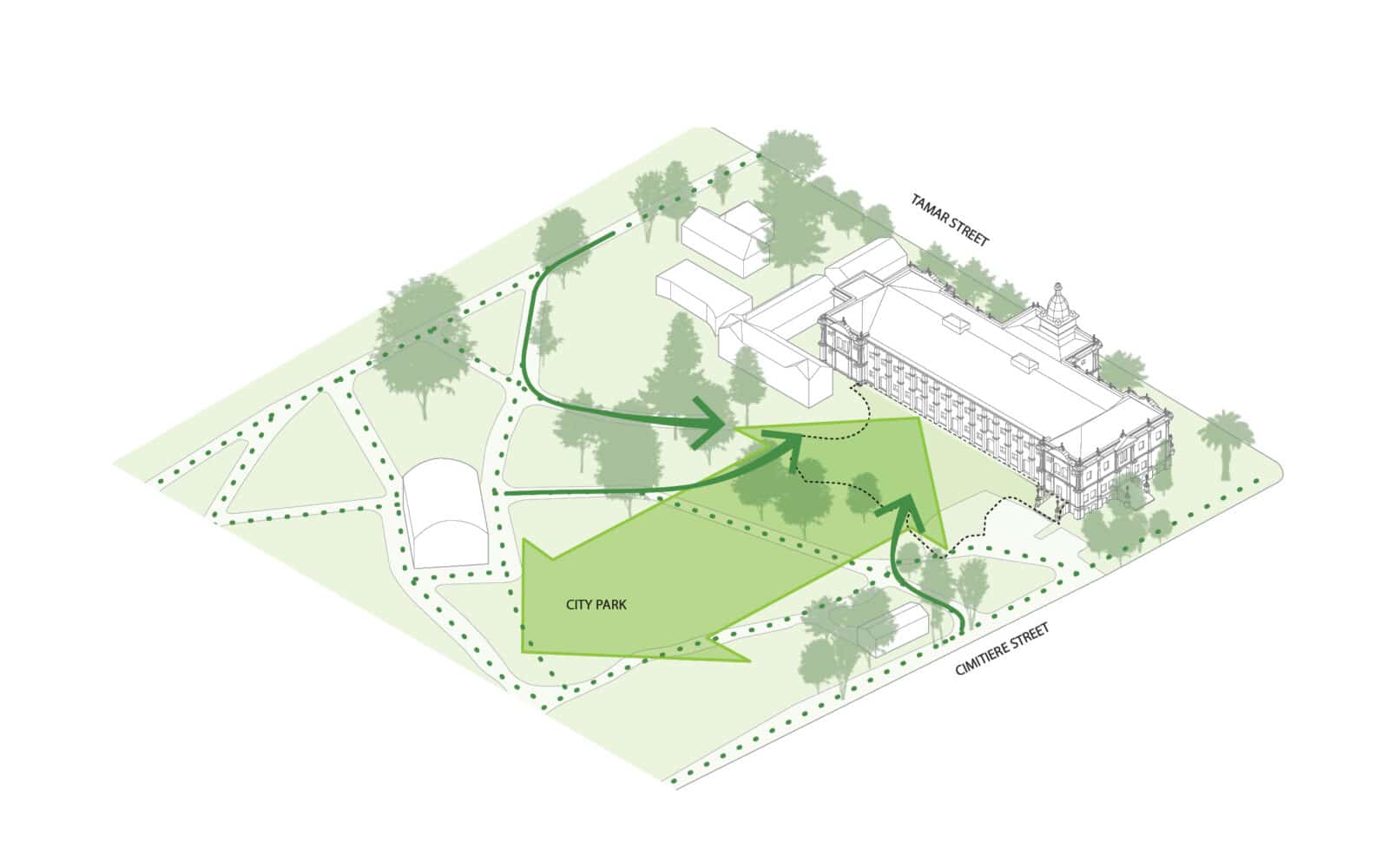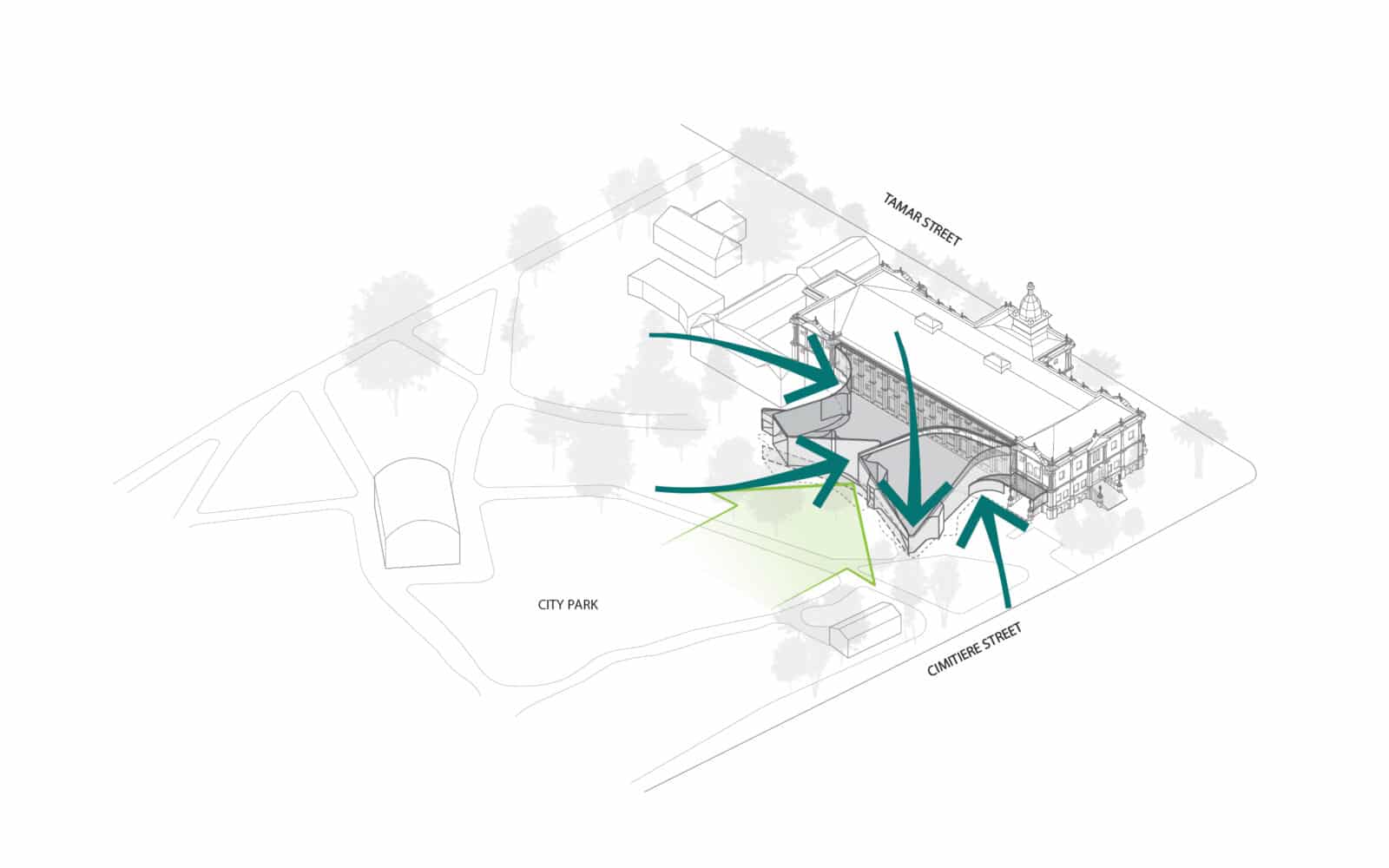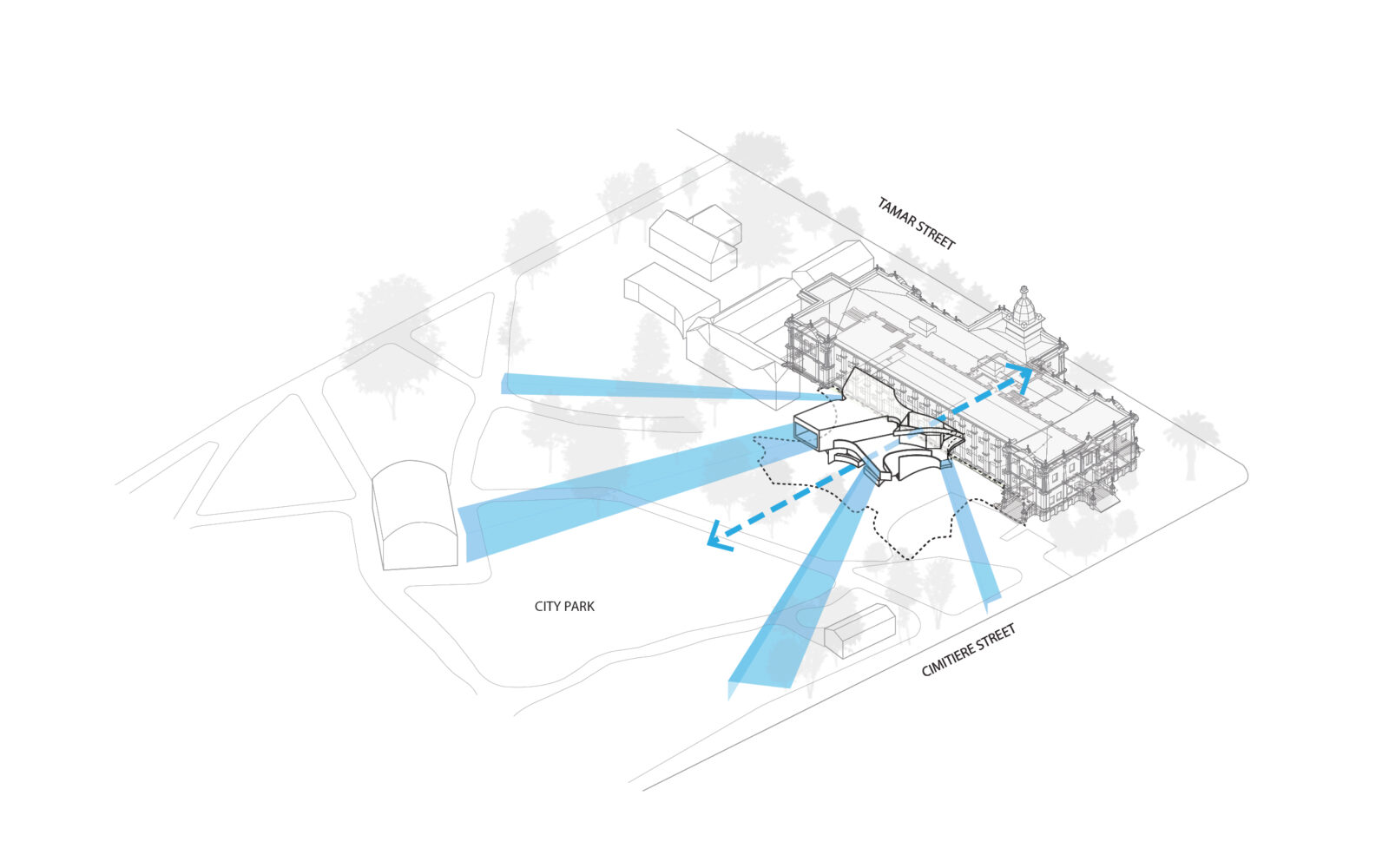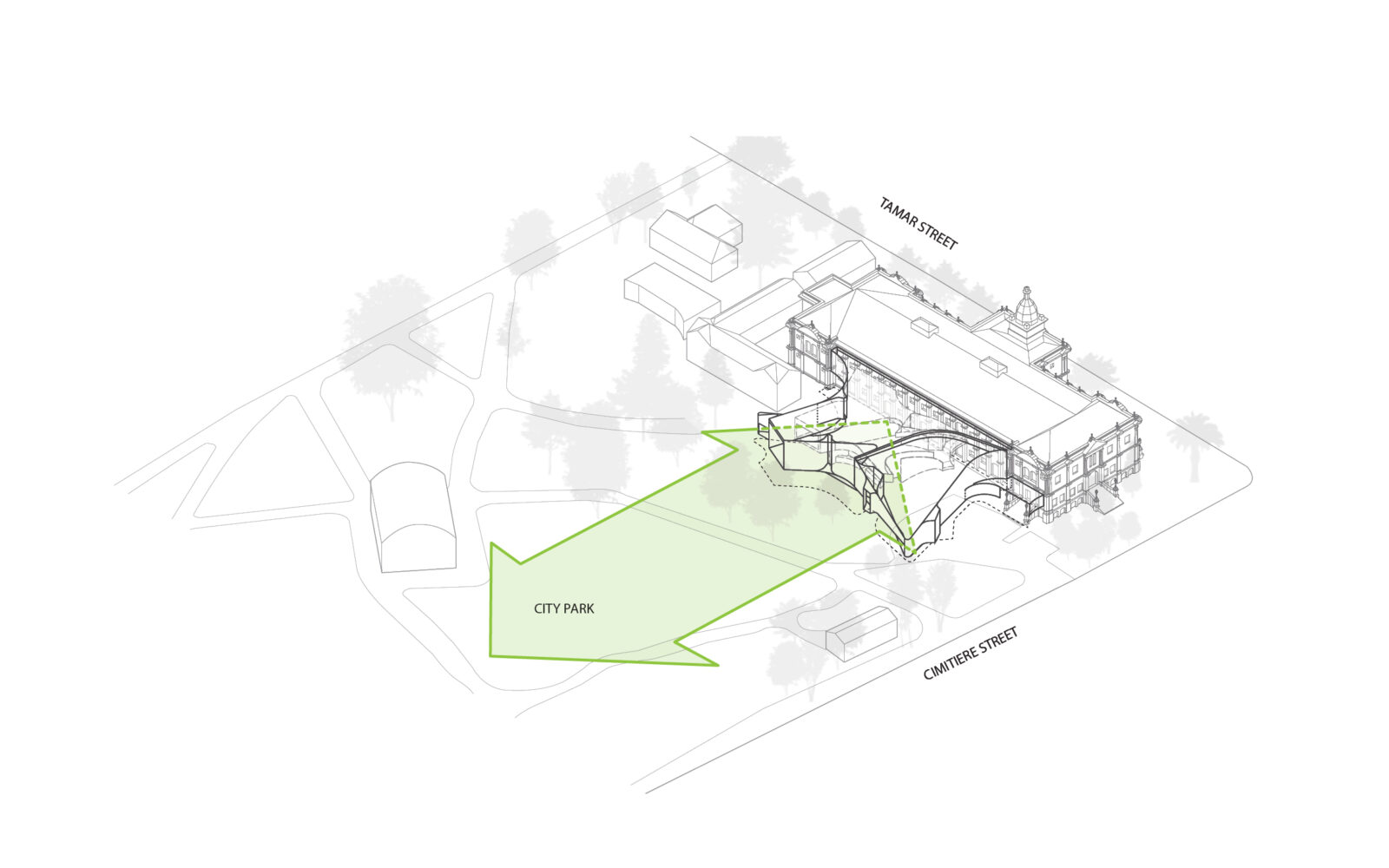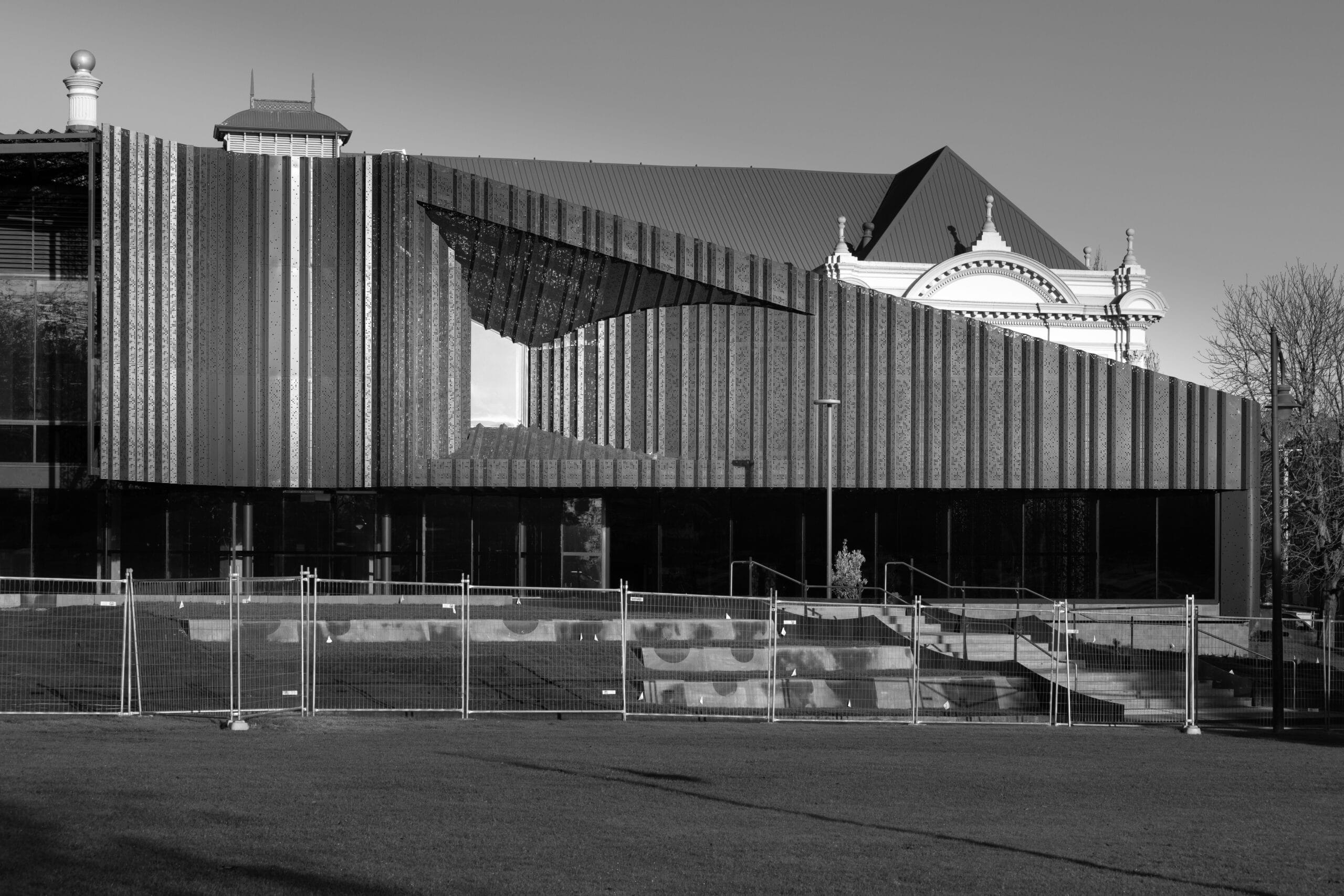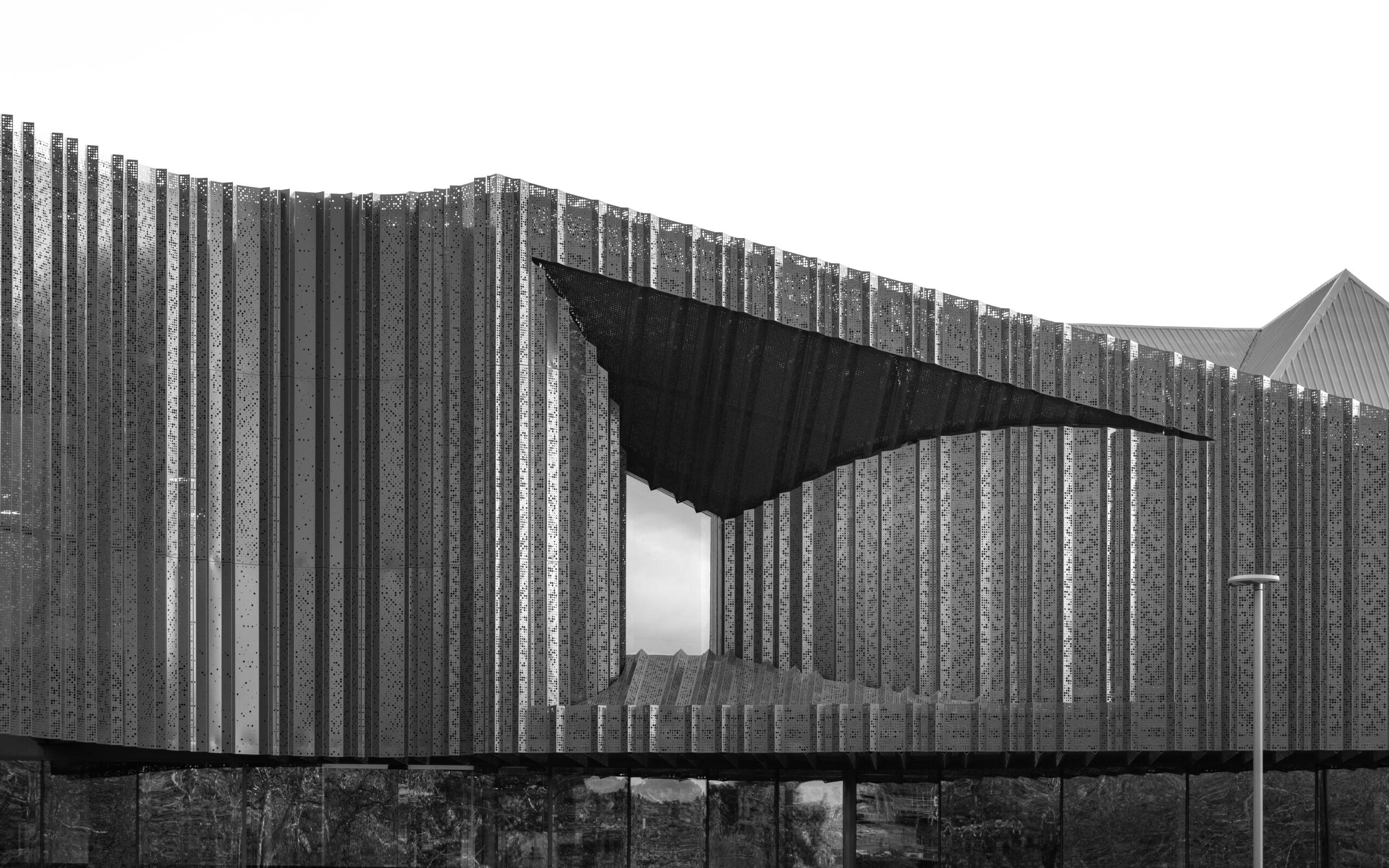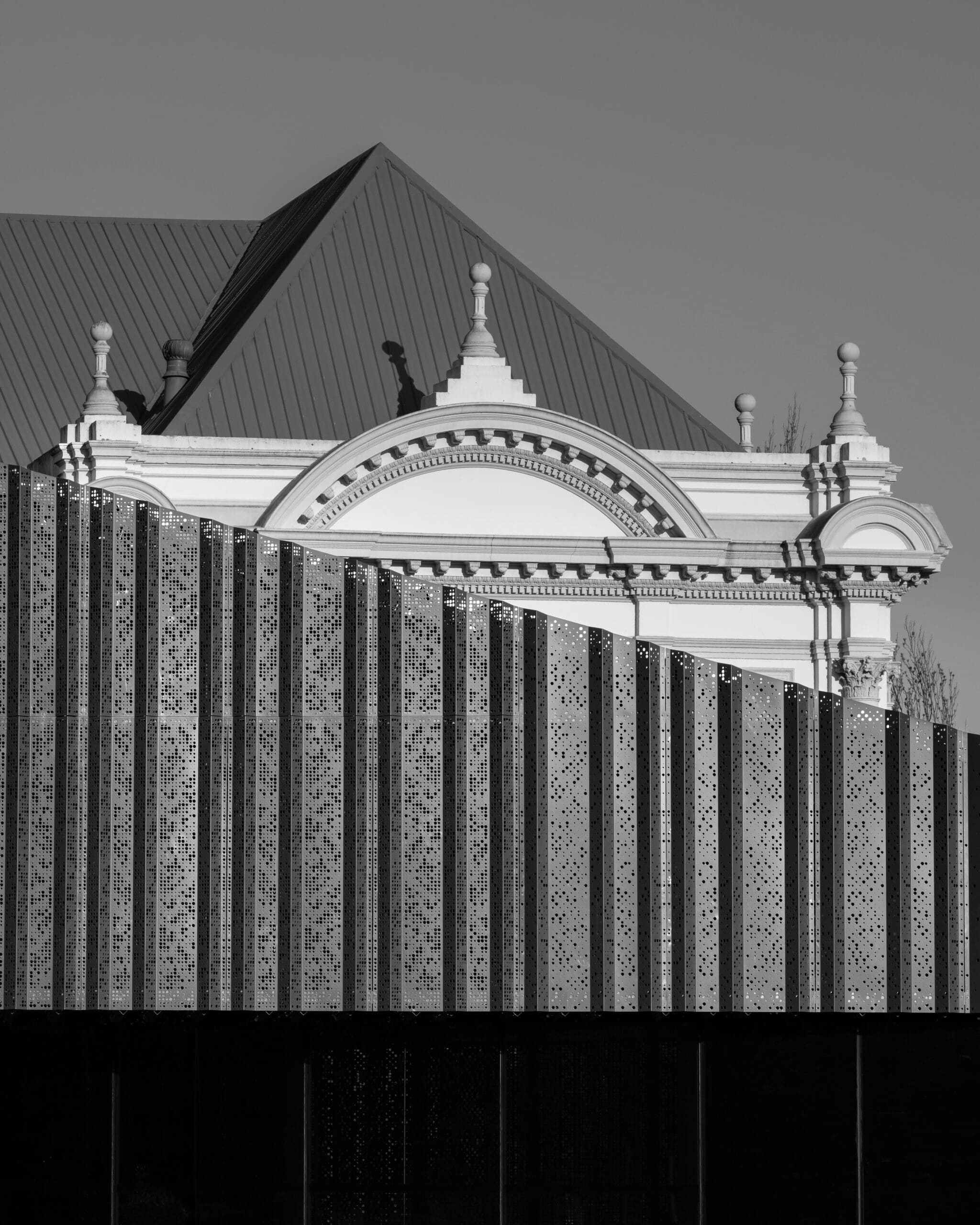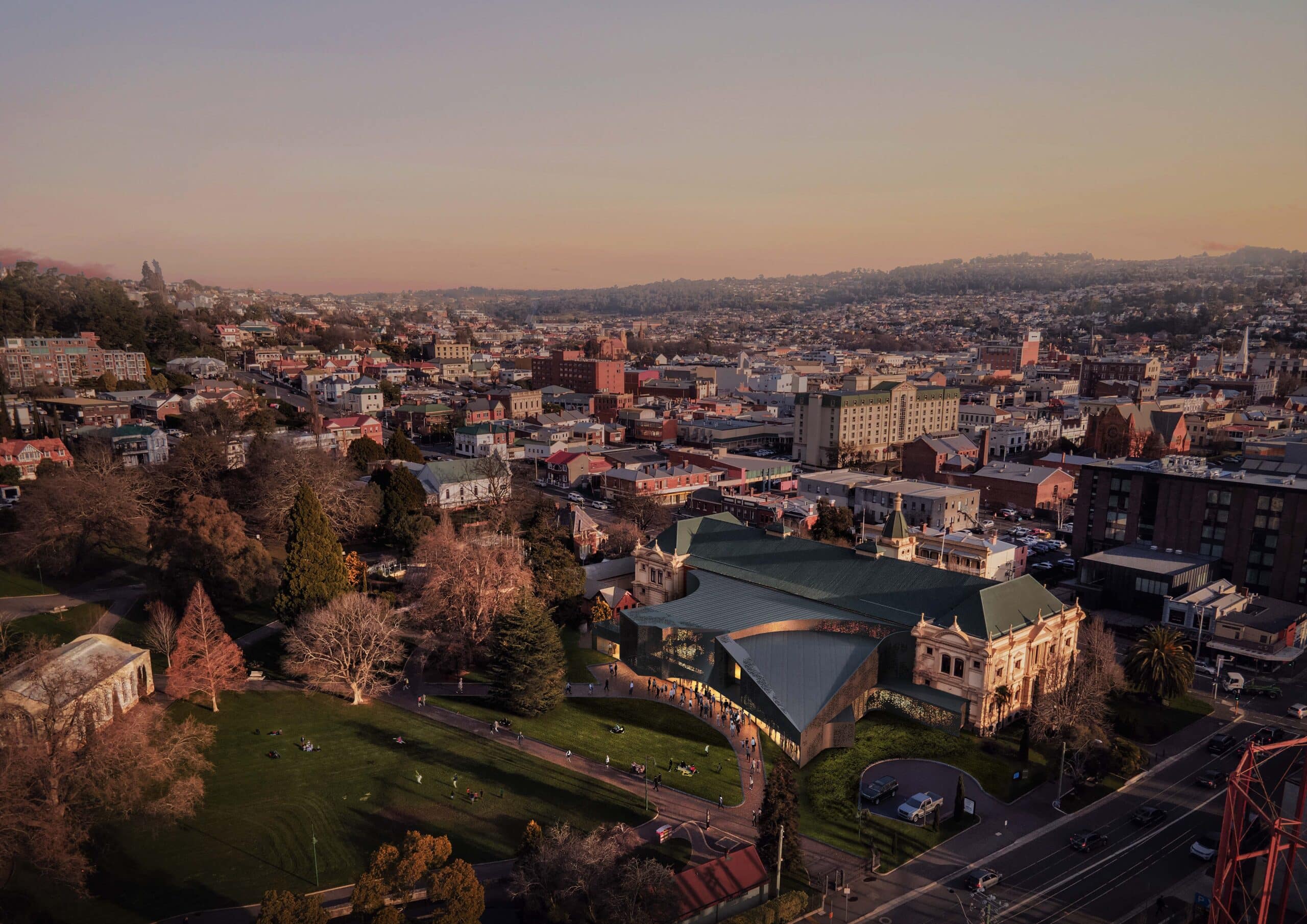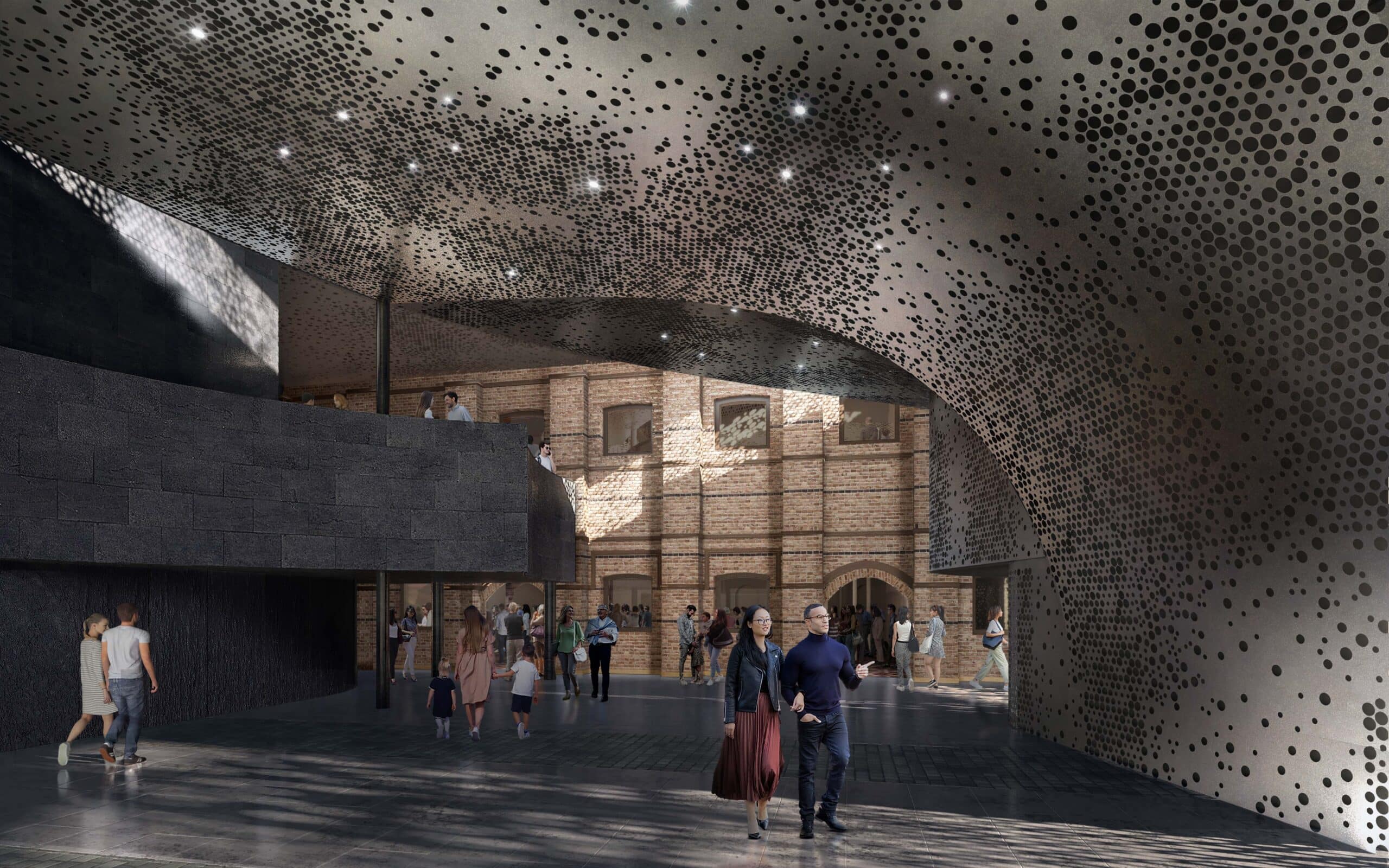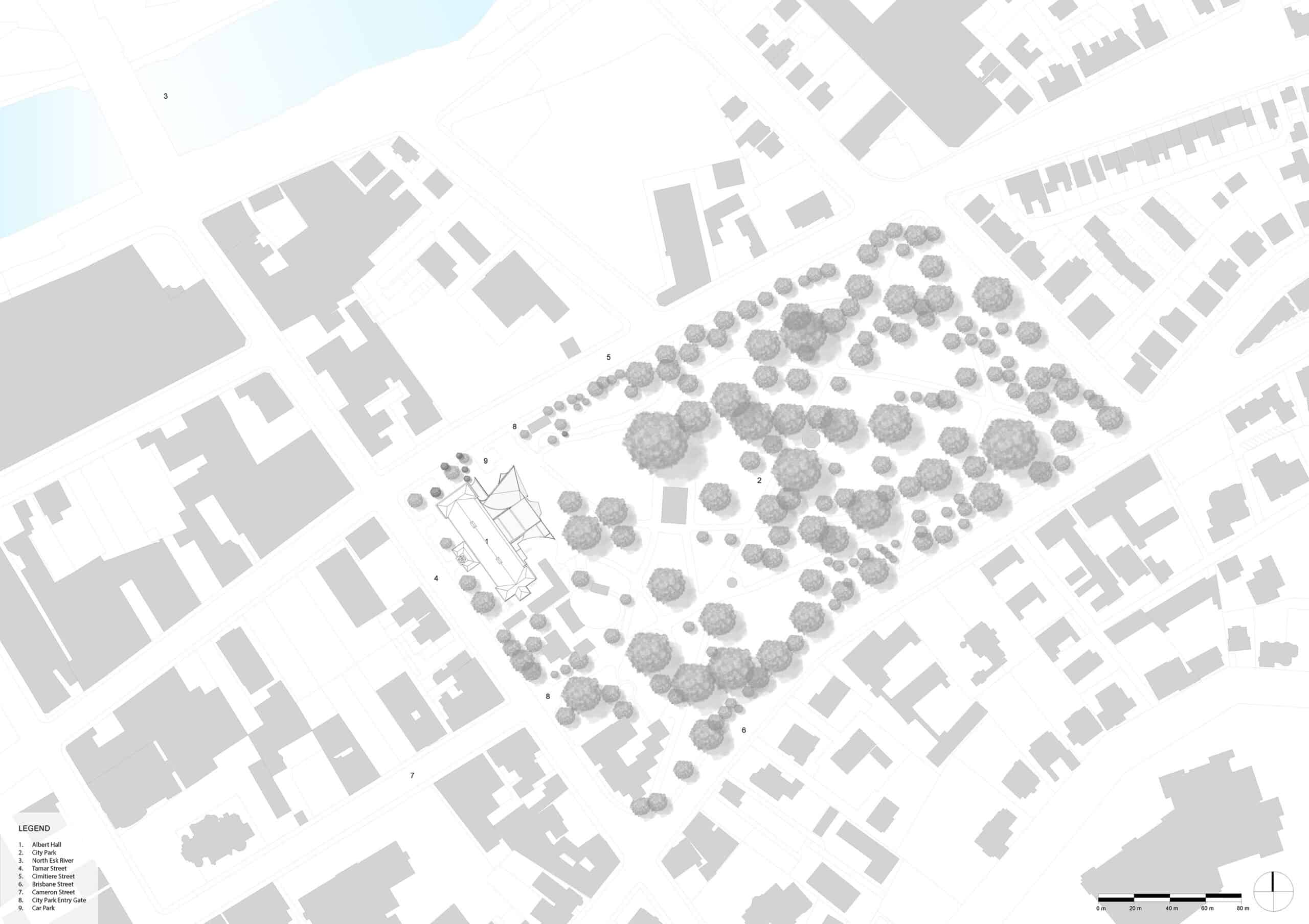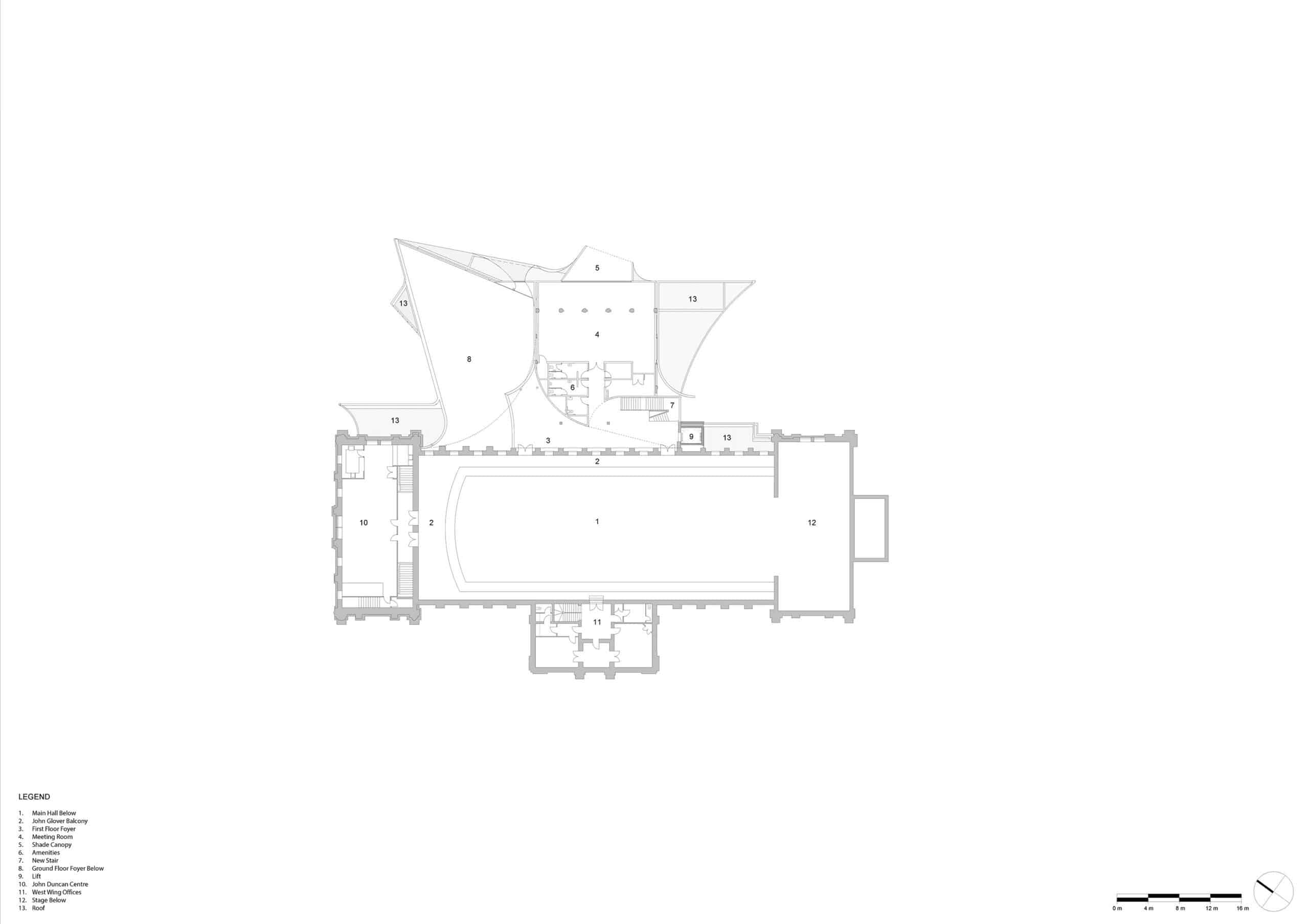-
A threshold between Hall and Park which rejuvenates both
Albert Hall Renewal
Albert Hall is a much-loved venue within Launceston – originally built for the Tasmanian Industrial Exhibition in the late 19th century, the Hall has become the site of many concerts, graduations, and events central to the social and cultural life of the city. The Hall is located at the edge of City Park, an equally important hub in the city, the establishment of which dates back to and is intertwined with the establishment of the city itself. However, despite the significance of both Hall and Park and their proximity, they have never been properly integrated.
Albert Hall has suffered from constrained access and capacity issues for many years, requiring some major repairs and reconfiguration. A central part of the renewal project was the opportunity for a new foyer to address both the pragmatic shortcomings of the Hall and the untapped potential of better integrating the building with the park in which it sits. Within stringent heritage constraints borne from the intactness of the Hall’s facades, the project realises a completely new connection between Hall and Park – a new foyer that is neither an extension to Albert Hall nor is a building in City Park. Rather, the project is a shadow between the two, reinforcing the primacy of Hall and Park as significant elements in memory and experience of the city.
- TYPE Public
- LOCATION LAUNCESTON | AU
- YEAR 2024 -
- WITH
APPROACH
The project establishes a new ground plane that connects the park and a new foyer to Albert Hall. This ground plane ‘gathers up’ the network of pathways throughout the park and consolidates them into a public terrace in front of the foyer. The result is a threshold between Park and Hall that celebrates key vistas and connections within the park while formalising views from the hall back into significant areas of the park. The result of this choreography between Park and Hall is a perforated, curved facade that is both enigmatic and unfamiliar given the formal manipulations required to achieve views and key relations to the Hall, while at the same time having an uncanny relation to the Victorian metalwork pavilions, handrails and other elements central to our memory and experience of the park itself.
